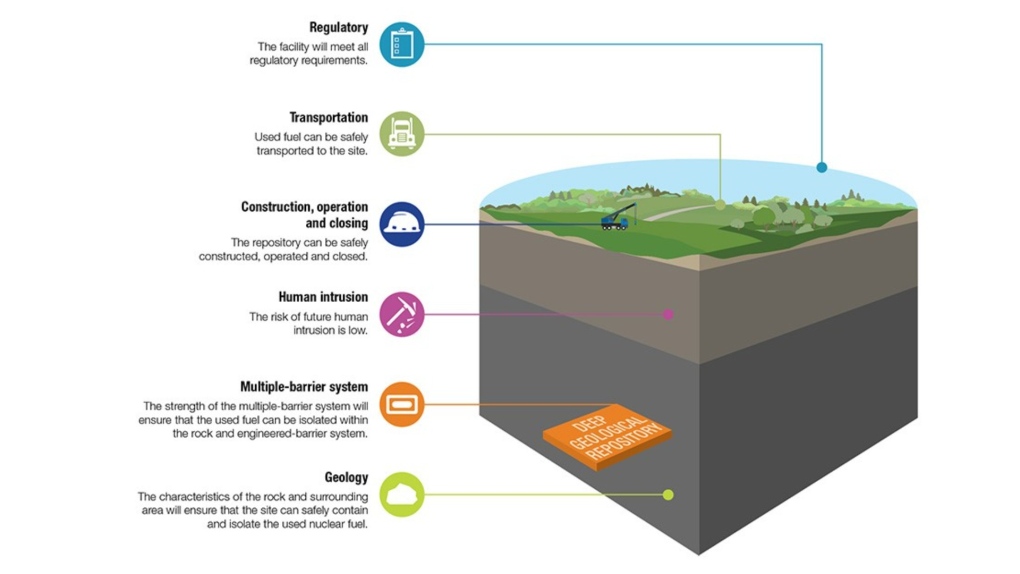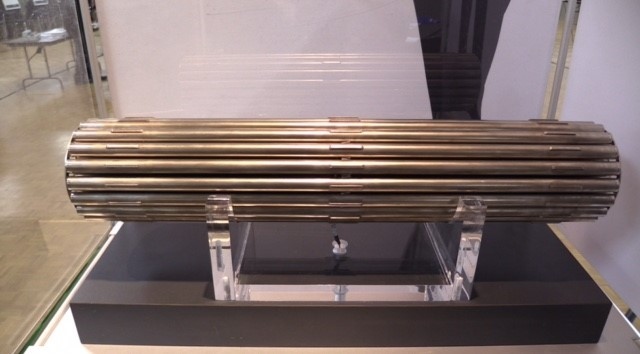'Not realistic': Saugeen Ojibway Nation may not vote on nuclear waste plan in 2024
The chiefs in charge of the Saugeen Ojibway Nation said their community will get to vote on whether or not they want Canada’s most radioactive waste buried in their territory.
“The Saugeen Ojibway Nation (SON) will have a referendum, and the majority wins,” said Chippewas of Nawash Unceded First Nation Chief Greg Nadjiwon.
When that vote will take place however is still undecided. The Nuclear Waste Management Organization (NWMO), tasked with finding a permanent home for Canada’s used nuclear fuel, wants to select a site by year’s end.
“That’s the NWMO’s goal, whether we will be able to meet that target is I would say no, not realistic,” said Nadjiwon, speaking from the Saugeen Ojibway Nation’s Environment Office in Wiarton, Ont. on Friday.
The NWMO has plans to bury Canada’s high level nuclear waste, 5.6 million used nuclear fuel bundles worth, under 1,500 acres of farmers fields north of Teeswater, Ont. in Bruce County.
Those fields fall within the traditional territory of the Saugeen Ojibway Nation.
According to the NWMO, the project will not move forward without the approval of the Saugeen Ojibway Nation, or the local municipality, the Municipality of South Bruce, who have scheduled a community referendum on the project this October.
 Graphics show what a deep geological repository to store Canada’s used nuclear fuel bundles might look like. (Source: Nuclear Waste Management Organization)“Worldwide it’s accepted as the right thing to do, to put it [used nuclear fuel] well beneath the ground where it can be contained and safely stored,” said Municipality of South Bruce Mayor Mark Goetz.
Graphics show what a deep geological repository to store Canada’s used nuclear fuel bundles might look like. (Source: Nuclear Waste Management Organization)“Worldwide it’s accepted as the right thing to do, to put it [used nuclear fuel] well beneath the ground where it can be contained and safely stored,” said Municipality of South Bruce Mayor Mark Goetz.
In January 2020, members of the Saugeen Ojibway Nation voted overwhelmingly against plans to bury Ontario’s low and intermediate level nuclear waste within two kilometres of Lake Huron.
Nadjiwon said while this project is different, the biggest question facing SON voters will be whether containing the radioactive waste in underground containers is the safest thing to do.
“You’ve got to ask yourself the question: if they do break down, what is the risk of that un-contained radioactive waste getting to the surface, where it could have an impact?” asked Nadjiwon.
Nadjiwon said SON will continue to educate itself and its members on the NWMO’s nuclear waste plan, and will hold their community referendum when they feel the time is right, whether that’s this year or next.
 A used nuclear fuel bundle is seen in Mildmay in October 2016. (Scott Miller/CTV News London)
A used nuclear fuel bundle is seen in Mildmay in October 2016. (Scott Miller/CTV News London)
CTVNews.ca Top Stories

Smith tells Trudeau Alberta will opt out of federal dental plan
Alberta is opting out of the federal dental plan, the premier told the Canadian government late Tuesday afternoon.
One of Canada's most popular vehicles recalled over transmission issue; 95,000 impacted
One of the country's most popular vehicles is being recalled in Canada due to a transmission issue that may impact tens of thousands of drivers.
WikiLeaks' Assange pleads guilty in deal with U.S. that secures his freedom, ends legal fight
WikiLeaks founder Julian Assange has pleaded guilty to obtaining and publishing U.S. military secrets in a deal with Justice Department prosecutors that secures his liberty and concludes a drawn-out legal saga that raised divisive questions about press freedom and national security.
'We need to regroup,' says Liberal minister and Ontario campaign co-chair in light of byelection loss
A member of Prime Minister Justin Trudeau's cabinet and the party's Ontario co-chair for the next campaign says the Liberals 'need to regroup' after a shocking overnight byelection loss to Pierre Poilievre's Conservatives.
Pre-med students can't take MCAT in Quebec because of Bill 96
Areeba Ahmed says she's always dreamed of becoming a surgeon but her road to the operating room has become a complicated one ever since Quebec's French language law came into effect.
Protesters try to topple Queen Victoria statue near pro-Palestinian encampment in Montreal
Montreal police were called to intervene after protesters attempted to tear down the Queen Victoria statue at Victoria Square.
Cup Noodles serves up notoriously poisonous pufferfish
Pufferfish is regarded as a luxury in Japan and a meal featuring the potentially poisonous delicacy can easily cost up to 20,000 yen (US$125) at high-end restaurants.
'Truly a great British Columbian': Former B.C. premier John Horgan has cancer again
Former B.C. premier and current Canadian ambassador to Germany John Horgan has been diagnosed with cancer for a third time.
New experience in Halifax gets people up close and personal to the ocean's most feared predator
Atlantic Shark Expeditions launched a new shark cage experience which gives brave attendees a chance to get up close and personal with the oceans most feared predator.




























